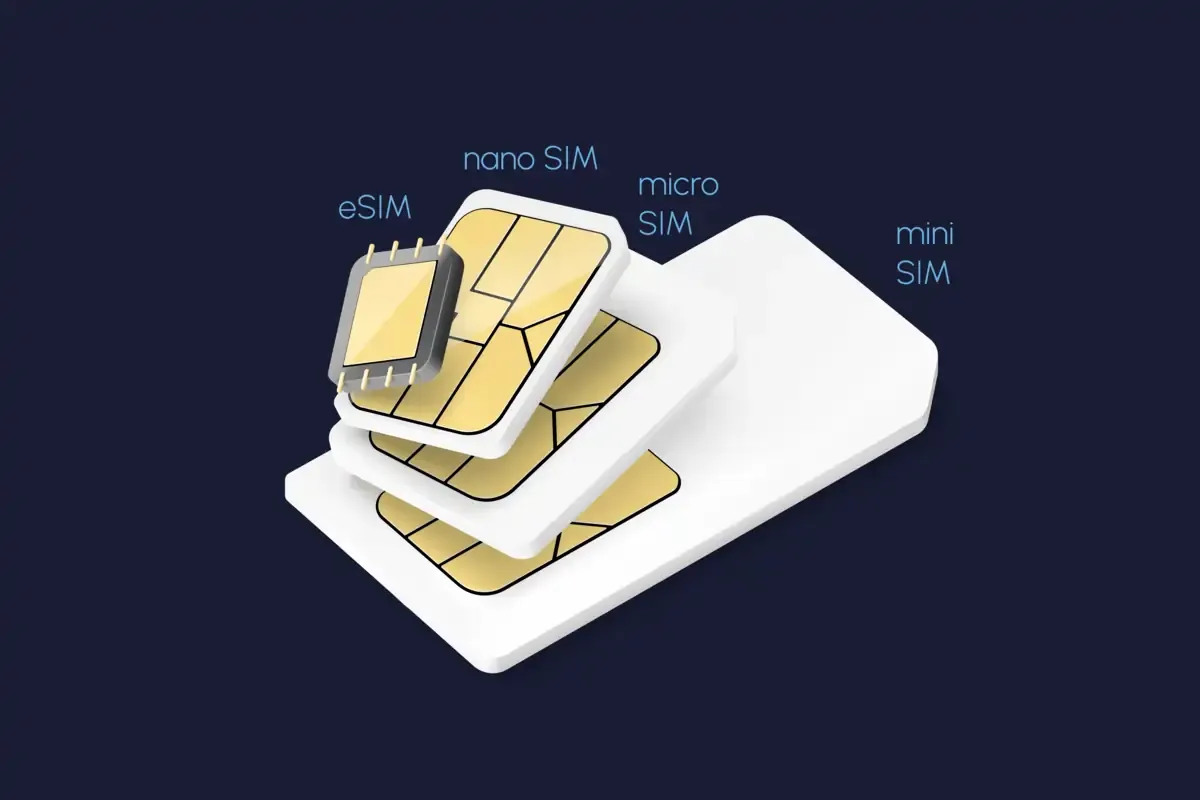eSIM, travel hacks
A Traveler’s Guide to eSIMs
Learn how travel eSIMs work, how to activate them, and why they’re the go-to choice for frequent travelers seeking flexible, affordable connectivity.
Welcome to the exciting world of eSIMs, where frequent travelers can finally wave goodbye to the hassle of swapping SIM cards. If you love exploring new places or travel often for work, you're probably familiar with the struggle of finding affordable mobile data without paying sky-high roaming fees.
eSIMs have changed how we stay connected when crossing borders, offering a simple solution that fits right in with a travel-focused lifestyle. They offer a new level of convenience and flexibility, making them perfect for anyone who often finds themselves in different time zones. You no longer need to fumble with those tiny trays or worry about losing a card while on the move. Imagine landing in a new country and connecting to mobile data without hunting for a local SIM shop.
Whether you're a digital nomad exploring the globe or a business traveler jumping between meetings, eSIMs make sure you're always online and ready to go.

What is an eSIM?
An eSIM, or embedded SIM, is a digital version of a physical SIM card that is built directly into your device. Instead of inserting a chip, you install a carrier’s digital profile via software. Functionally, eSIMs do everything a traditional SIM does such as connecting your phone to your carrier's network and managing your data plan. But they do it with more flexibility, fewer physical limitations, offering several advantages over physical SIMs.
Why This Matter for Travelers?
For international travelers, eSIMs offer simplicity for a smoother, more efficient way to stay online:
- Fast setup without waiting for physical shipping
- Store multiple plans from different providers on one device (Read more in our guide to learn how to manage multiple profiles.)
- No more searching for SIM kiosks at airports or local markets
- Cut down on plastic waste from disposable SIM cards
Top eSIM Plans for Frequent Travelers
Choosing the right eSIM plan can make all the difference when you're constantly bouncing between countries. Before picking one, think about where you normally go, how often you travel, and what apps or services you rely on most when you’re away from home. Here’s a breakdown of common choices:
Global Coverage Plans These are perfect for travelers covering multiple continents. You can keep the same profile active as you move from city to city. That means one plan works in places like New York, Paris, and Tokyo without needing to swap or reinstall anything.
Regional Plans If your travel sticks to a specific continent or region, like Europe or Southeast Asia, regional plans offer better rates and consistent performance. They’re designed for extended stays and cover many countries in one area without extra charges.
High Data Plans Some travelers depend on a constant connection for work. If your day involves video calls, file uploads, and navigation apps, a plan with more data is the way to go. These options come with higher caps so you don’t constantly worry about running out mid-meeting.
💡 Did you know? Nomad offers both regional plans for focused coverage across specific areas, and global plans for seamless data access across continents.
How to Activate and Use Your eSIM
Setting up your eSIM is easier than you might think. You won’t need any tools or tech knowledge to get started. Just follow these simple steps:
Check compatibility. Confirm your smartphone or tablet supports eSIM in your phone settings or refer to our list of eSIM-compatible devices.
Pick a plan. Choose one based on your region, duration, and data needs.
Install the eSIM. Scan a QR code or follow an activation link from the provider..
Activate. In your phone settings, enable your new eSIM as the default for data.
Test the connection. Before flying or right after landing.
Need help estimating your data needs? Use Nomad’s data calculator or check out our guide on how much data you need when traveling.
If you face connection issues, try the following steps highlighted in our eSIM troubleshooting guide such as toggling mobile data settings, reinstalling the profile, or contacting Nomad support with your activation ID.
Benefits of Using Nomad’s eSIM Plans
Nomad’s eSIM plans are designed with convenience, flexibility, and cost savings in mind. Traveling with an eSIM from Nomad means no delays, no long-term contracts, and no extra roaming fees. On top of that, Nomad offers pay-as-you-need options without locking you into ongoing fees. No extra roaming fees sneak onto your bill, and you can tailor your plan to your expected usage before a trip.
One of the big pluses is the wide coverage across more than 200 destinations. Whether you’re making last-minute connections in Europe or island-hopping in Southeast Asia, Nomad offers plans that fit snugly into those travel patterns.
Frequent users appreciate being able to:
- Skip airport SIM card kiosks
- Avoid manually switching between physical cards
- Switch seamlessly between plans from your phone settings
For example, a business traveler landing in Frankfurt can have their data connection up and running before clearing customs. Or a backpacker heading from Bangkok to Hanoi doesn’t need to track down a new SIM upon arrival. It’s all ready to go from the Nomad app.
Staying Connected Across Multiple Destinations
Many travelers don’t stick to just one country. Using an eSIM like Nomad across various destinations keeps things simple. One of the best parts is how you can jump borders without toggling settings or buying a new plan each time.
Here are a few helpful tips:
- Choose a global or multi-country plan if your itinerary includes several stops
- Buy your eSIM in advance and download additional eSIM profiles ahead of time if you anticipate being offline between destinations
- Monitor your data usage consistently so there are no surprises
If you’re headed somewhere more remote, like a national park or mountain village, stay aware of the local network availability. Some rural areas have limited coverage no matter the service. But as long as you’re within Nomad’s listed coverage regions, you’ll have reliable access to email, maps, and messaging apps.
Bonus: We've put together a simple guide to ensure a smooth activation process. Follow our 5-Minute Pre-Flight Checklist before you fly to have your eSIM ready for instant use on arrival.
Frequently Asked Questions (FAQs)
What is an eSIM and how does it work?
An eSIM is a digital SIM card embedded in your device. It stores carrier info and works just like a physical SIM but without taking up space or needing to be swapped.
Are eSIMs compatible with all smartphones?
Many modern smartphones support eSIM, including major models from Apple, Samsung, and Google. Check your phone’s specs before buying a plan.
How do I choose the best eSIM plan for my travel needs?
Think about where you’re going, how much data you use, and how long you’ll be away. Match your plan to your coverage needs and usage type.
Can I use an eSIM in multiple countries?
Yes. Some eSIM plans offer multi-country or global coverage. These are great for longer trips or frequent flyers hopping between countries.
What should I do if I have trouble activating my eSIM?
First, make sure your phone supports eSIM. Double-check the activation steps provided with your purchase. If trouble continues, reach out to customer support with your activation details.
Never Miss a Beat While Traveling
Today's travelers expect fast, secure, and simple mobile service wherever they go. eSIMs are helping meet that need. They remove the hassle of physical cards, offer easier management, and make it more affordable to stay connected.
Picking the right eSIM plan takes a little thought about your travel style and how you use data. From high-cap plans to global options with reliable coverage, there's something for every traveler.
Nomad eSIMs offer the flexibility and simplicity that lets frequent travelers focus on experiences, not technical workarounds. Whether you’re chasing sunsets or closing client deals, staying connected should never slow you down.
Nomad eSIM Free Trial
Try Nomad eSIM risk-free with our free trial—no contracts, no commitment. Set up in minutes, enjoy secure connectivity, and manage everything easily through the Nomad eSIM app.




